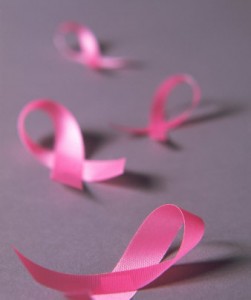Sources: Harvard School of Public Health; Annals of Internal Medicine online; BBC Health News; Case experience
 RESEARCHERS from the Harvard School of Public Health (HSPH) have recently suggested that routine mammography screening, the current essential tool in detecting early breast cancers, may lead to a significant amount of overdiagnosis of disease that would otherwise have proved harmless.
RESEARCHERS from the Harvard School of Public Health (HSPH) have recently suggested that routine mammography screening, the current essential tool in detecting early breast cancers, may lead to a significant amount of overdiagnosis of disease that would otherwise have proved harmless.
Analyzing data from 39,888 women with invasive breast cancer in Norway, 7,793 of whom were diagnosed during the 10-year rollout of the Norwegian Breast Cancer Screening Program, which began in 1996, (women ages 50 through 69). One might ask, why Norway? This was actually one of the largest and most comprehensive studies of Mammography to date. Given the size of the study, researchers were able to compare the number of breast cancer cases in women who had been offered screening with those not offered screening. The working theory was if mammography is beneficial, it would lead to a decrease in late-stage breast cancer cases, or early detection prevents late-stage disease. But the researchers did not find a reduction in late-stage disease in women who’d been offered screening. Instead, they found that of 7,793 women diagnosed with breast cancer through participation in the screening program, 15% to 25% were overdiagnosed (1,169 – 1,948 women). They extrapolated that for the 1 death prevented, 6 to 10 women will be overdiagnosed, and treated with surgery, radiation therapy, and possibly chemotherapy without any benefit.
But what if you are the 1 woman that is saved by an early diagnosis? Hold that thought.
An earlier and much cited study in Sweeden (1974 to 1978) found, ironically, that death rates from breast cancer in Swedish women, overall, started to decline in 1972, before routine screening was introduced. The overall net effect was limited or no impact from screening on death rates from breast cancer. That study was also used by some as a justification for abandoning mammography altogether. The argument, ran something like this: If 2 women in their 40’s have aggressive breast cancer and 1 is diagnosed early by a mammogram, does she have a better quality of life? The woman diagnosed will undergo mastectomy, reconstruction and chemotherapy in an effort to halt the aggressive breast cancer, with all of the attendant pain and complications associated with the treatment and will, if statistics hold, die within 7 years. The other woman will go about her life, without all of the attendant pain and complications and mental anguish of knowing her diagnosis, and will also die, within 7 years. No greater life expectancy and who has the better quality of life until then?
Compelling argument?
What if we aren’t talking about aggressive breast cancer with no hope of a cure? What if we are talking about breast cancer with a chance for cure -a good chance? What if the patient undergoing mammography never learns of their results because the imaging center where they were performed closes, suddenly, and her films sit, unreported to her for over a year during which the opportunity for a cure is lost? We have that very patient and she is a client. Even if we are talking about aggressive breast cancer, who are we to assign a value to an extra year of life or even a few months? The point is that there are a lot of studies out there and there are a lot of reasons for studies being undertaken and even directed towards certain findings -cost containment is no small reason for some. Routine Screening Mammography may not be the best or the most accurate tool out there, but until a better one is developed, if you or someone you love are a woman for whom it would have made a difference, do overall statistics on death rates tell the whole story?
If you or a loved one have been diagnosed with breast cancer which was misdiagnosed or diagnosed late, contact the Lewis Law Firm for a FREE consultation and review of your case, today. The Lewis Law Firm has a long history of representing women with breast cancer and their families in Pennsylvania and New Jersey.
